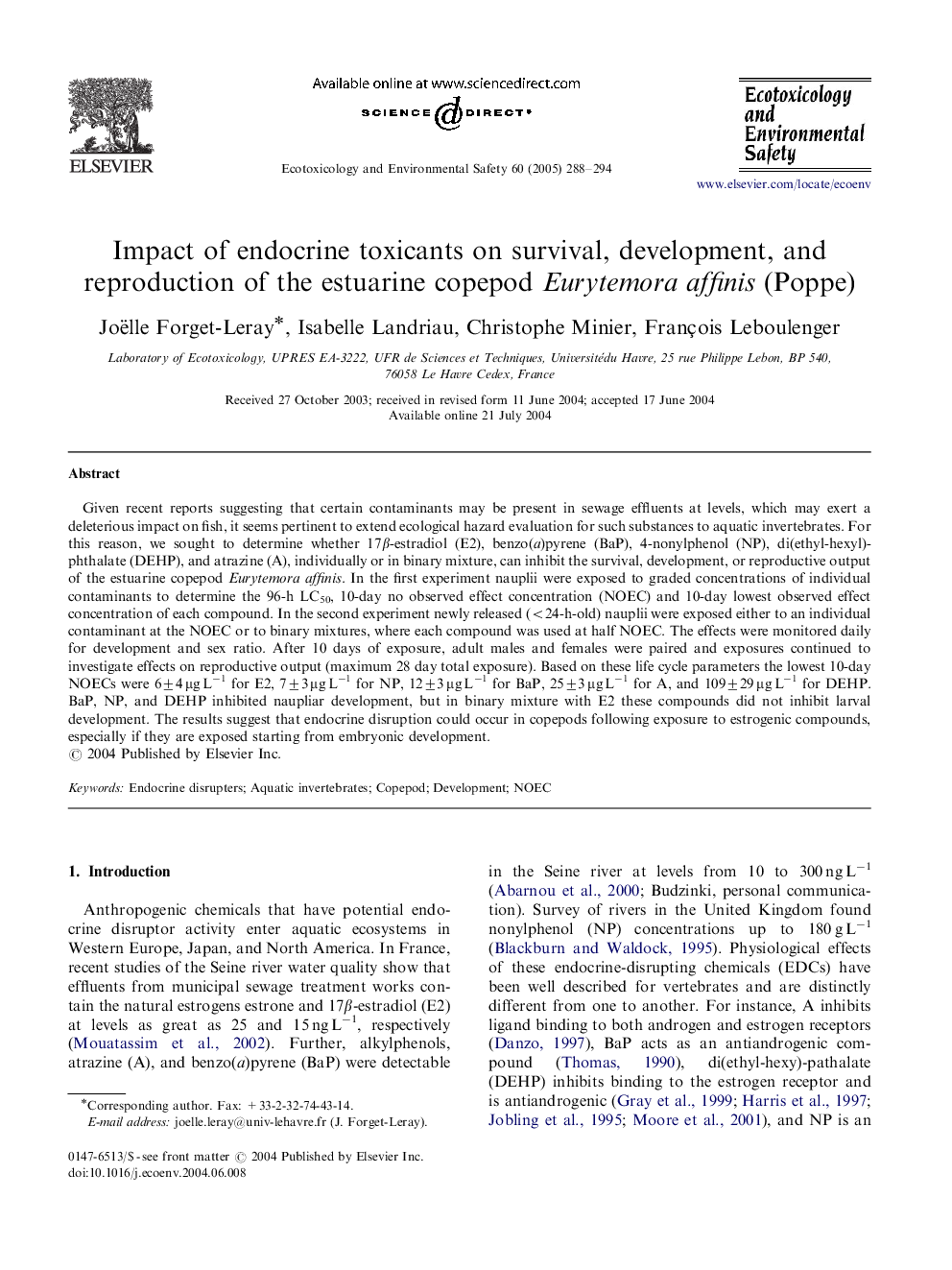| Article ID | Journal | Published Year | Pages | File Type |
|---|---|---|---|---|
| 9454757 | Ecotoxicology and Environmental Safety | 2005 | 7 Pages |
Abstract
Given recent reports suggesting that certain contaminants may be present in sewage effluents at levels, which may exert a deleterious impact on fish, it seems pertinent to extend ecological hazard evaluation for such substances to aquatic invertebrates. For this reason, we sought to determine whether 17β-estradiol (E2), benzo(a)pyrene (BaP), 4-nonylphenol (NP), di(ethyl-hexyl)-phthalate (DEHP), and atrazine (A), individually or in binary mixture, can inhibit the survival, development, or reproductive output of the estuarine copepod Eurytemora affinis. In the first experiment nauplii were exposed to graded concentrations of individual contaminants to determine the 96-h LC50, 10-day no observed effect concentration (NOEC) and 10-day lowest observed effect concentration of each compound. In the second experiment newly released (<24-h-old) nauplii were exposed either to an individual contaminant at the NOEC or to binary mixtures, where each compound was used at half NOEC. The effects were monitored daily for development and sex ratio. After 10 days of exposure, adult males and females were paired and exposures continued to investigate effects on reproductive output (maximum 28 day total exposure). Based on these life cycle parameters the lowest 10-day NOECs were 6±4 μg Lâ1 for E2, 7±3 μg Lâ1 for NP, 12±3 μg Lâ1 for BaP, 25±3 μg Lâ1 for A, and 109±29 μg Lâ1 for DEHP. BaP, NP, and DEHP inhibited naupliar development, but in binary mixture with E2 these compounds did not inhibit larval development. The results suggest that endocrine disruption could occur in copepods following exposure to estrogenic compounds, especially if they are exposed starting from embryonic development.
Related Topics
Life Sciences
Environmental Science
Environmental Chemistry
Authors
Joëlle Forget-Leray, Isabelle Landriau, Christophe Minier, François Leboulenger,
